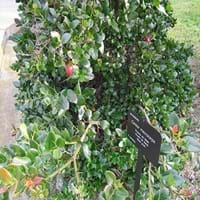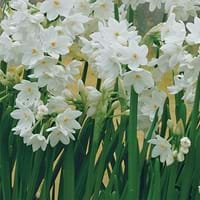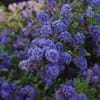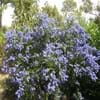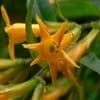Type
Shrub
Bulb or Corm or Tuber
Origin
Southern Africa
Mediterranean, Northern Africa
Types
Carissa bispinosa, Carissa carandas
Not Available
Habitat
Coastal Regions, Tropical regions
Grassland, Hillside, Pastures, Riverbanks, Rocky areas, Scrubs, Woods
USDA Hardiness Zone
9-11
3-9
Sunset Zone
H2, 16, 17, 18, 19, 20, 21, 22, 23, 24
21,22
Habit
Cushion/Mound-forming
Clump-Forming
Flower Color
White
White, Salmon, Ivory
Flower Color Modifier
Not Available
Bicolor
Fruit Color
Light Red
Sandy Brown
Leaf Color in Spring
Dark Green
Green
Leaf Color in Summer
Dark Green
Light Green
Leaf Color in Fall
Dark Green
Several shades of Green
Leaf Color in Winter
Dark Green
Light Green
Leaf Shape
Elliptic and Ovate
Linear
Plant Season
Spring, Summer, Fall, Winter
Spring
Sunlight
Full Sun, Partial Sun
Full Sun, Partial Sun
Type of Soil
Loam, Sand
Clay, Loam, Sand
The pH of Soil
Acidic, Neutral
Acidic, Neutral, Alkaline
Soil Drainage
Well drained
Well drained
Bloom Time
Indeterminate
Early Spring, Spring
Tolerances
Shade areas
Drought
Where to Plant?
Ground, Pot
Container, Ground, Pot
How to Plant?
Seedlings, Stem Planting, Vegetative Reproduction
From bulbs
Plant Maintenance
Low
Medium
Watering Requirements
Average Water Needs, Do Not over Water, Never Over-water, Requires regular watering, Water daily during growing season, Water when top layer of soil becomes dry
Requires regular watering
In Summer
Lots of watering
Lots of watering
In Spring
Moderate
Moderate
In Winter
Average Water
Average Water
Soil pH
Acidic, Neutral
Acidic, Neutral, Alkaline
Soil Type
Loam, Sand
Clay, Loam, Sand
Soil Drainage Capacity
Well drained
Well drained
Sun Exposure
Full Sun, Partial Sun
Full Sun, Partial Sun
Pruning
Prune if you want to improve plant shape, Prune to control growth, Remove damaged leaves, Remove dead leaves, Remove dead or diseased plant parts
Remove damaged leaves, Remove dead branches, Remove dead leaves
Fertilizers
fertilize in growing season, Nitrogen, Phosphorous, Potassium
All-Purpose Liquid Fertilizer
Pests and Diseases
Insects, Red blotch, Scale, Spider mites, Thripes, Whiteflies
Red blotch
Plant Tolerance
Shade areas
Drought
Flower Petal Number
Single
Single
Foliage Texture
Medium
Medium
Foliage Sheen
Glossy
Matte
Attracts
Birds
Butterflies
Allergy
Toxic
Not Available
Aesthetic Uses
Beautification, Bonsai, Cottage Garden, Landscape Designing, Showy Purposes
Showy Purposes
Beauty Benefits
Not Available
Not Available
Environmental Uses
Air purification, Food for insects, Prevent Soil Erosion
Air purification
Medicinal Uses
No Medicinal Use
Healing
Part of Plant Used
Flowers, Fruits
Flowers
Other Uses
Decoration Purposes, Showy Purposes, Used as Ornamental plant, Used for its medicinal properties
Used for bedding in gardens
Used As Indoor Plant
Yes
Yes
Used As Outdoor Plant
Yes
Yes
Garden Design
Bedding Plant, Container, Edging, Edible, Foundation, Groundcover, Hedges, Topiary, Bonsai, Espalier, Tropical
Cutflower, Foundation, Houseplant, Mixed Border, Rock Garden / Wall
Botanical Name
CARISSA macrocarpa
NARCISSUS papyraceus
Common Name
Carissia
Paperwhite Narcissus
In Hindi
Carissa
paperwhite narcissus
In German
carissa
Narcissus Pperwhite
In French
carissa
Narcissus Pperwhite
In Spanish
carissa
Narciso Pperwhite
In Greek
carissa
Νάρκισσος Pperwhite
In Portuguese
carissa
Narciso Pperwhite
In Polish
carissa
Narcyz Pperwhite
In Latin
carissa
Narcissus Pperwhite
Phylum
Magnoliophyta
Magnoliophyta
Class
Magnoliopsida
Liliopsida
Order
Gentianales
Asparagales
Family
Apocynaceae
Amaryllidaceae
Clade
Angiosperms, Asterids, Eudicots
Angiosperms, Asparagales, Monocots
Tribe
Carisseae
Not Available
Subfamily
Rauvolfioideae
Amaryllidoideae
Number of Species
Not Available
Difference Between Carissa and Paperwhite Narcissus
If you are confused whether Carissa or Paperwhite Narcissus are same, here are some features about those plants to help you choose better. Many people think that these two plants have the same characteristics, but one can see Carissa and Paperwhite Narcissus Information and learn more about it. Fertilizers required for proper growth of Carissa are fertilize in growing season, Nitrogen, Phosphorous and Potassium, whereas for Paperwhite Narcissus fertilizers required are All-Purpose Liquid Fertilizer. Hence, one should know the basic difference between Carissa and Paperwhite Narcissus if you are planning to have them in your garden to enhance its beauty.
<
Flowering PlantsImportance of Carissa and Paperwhite Narcissus
Want to have the most appropriate plant for your garden? You might want to know the importance of Carissa and Paperwhite Narcissus. Basically, these two plants vary in many aspects. Compare Carissa and Paperwhite Narcissus as they differ in many characteristics such as their life, care, benefits, facts, etc. Every gardener must at least have the slightest clue about the plants he wants to plant in his garden. Compare their benefits, which differ in many ways like facts and uses. The medicinal use of Carissa is No Medicinal Use whereas of Paperwhite Narcissus is Healing. Carissa has beauty benefits as follows: Not Available while Paperwhite Narcissus has beauty benefits as follows: Not Available.
Compare Facts of Carissa vs Paperwhite Narcissus
How to choose the best garden plant for your garden depending upon its facts? Here garden plant comparison will help you to solve this query. Compare the facts of Carissa vs Paperwhite Narcissus and know which one to choose. As garden plants have benefits and other uses, allergy is also a major drawback of plants for some people. Allergic reactions of Carissa are Toxic whereas of Paperwhite Narcissus have Not Available respectively. Having a fruit bearing plant in your garden can be a plus point of your garden. Carissa has showy fruits and Paperwhite Narcissus has no showy fruits. Also Carissa is not flowering and Paperwhite Narcissus is not flowering . You can compare Carissa and Paperwhite Narcissus facts and facts of other plants too.
